Korg KingKorg Neo Review: More than just a glitch in the Matrix?
Many oscillators and filters help the Korg KingKorg Neo stand out.
The Korg KingKorg Neo sees the underrated 2013 virtual analogue synth get a cosmetic refresh to match the company’s recent roster of digital synths. Is it worth taking a second look at it?
Korg KingKorg Neo – Standout Features
- Virtual analogue synth with additional DWGS and PCM oscillators (138 types)
- XMT (eXpanded Modelling Technology) sound engine
- 18 types of filters
- 2 envelope generators and 2 LFOs
- 24 voices
- 2 timbres (layers/splits)
- 3 effects sections plus 2-band equalizer
- 16-band vocoder
- Editable arpeggiator
- 37 keys with velocity sensitivity
Korg KingKorg Neo
The original Korg KingKorg debuted at NAMM 2013 alongside a little something called the MS-20 Mini. The MS-20 recreation stole the show and kicked off an analogue revival that’s still going to this day. The KingKorg, a virtual analogue synth with a five-octave keyboard, never quite got the kudos it deserved, caught in the changing winds of public taste.
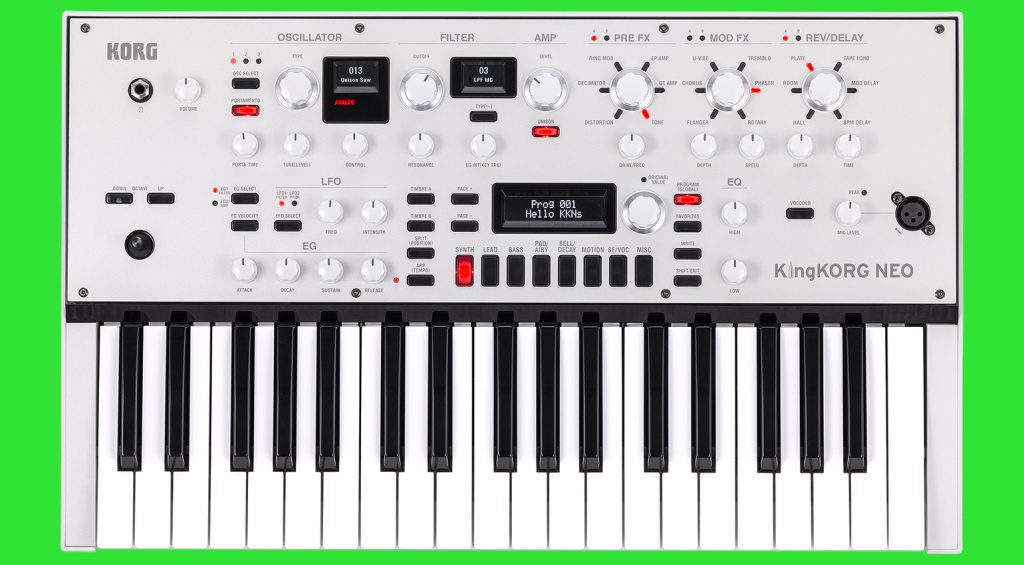
Now it’s back. Eleven years later, Korg has decided to try again, rechristening it the KingKorg Neo and repackaging it in a three-octave keyboard housing that matches the company’s current lineup of digital synths, which includes the Opsix, Wavetstate and Mod Wave. The original XMT sound engine (that’s eXpanded Modeling Technology in case you were wondering) is largely unchanged, although Korg has made a few tweaks to it for the Neo edition (more on this next).
Will 2024 be kinder to the KingKorg than 2013?
The Difference Is In The Details
The 24-voice Korg KingKorg Neo is essentially the same synthesizer as the original but there are a few differences worth mentioning. The biggest change is in the appearance. Gone is the car interior-like colour and styling, replaced by a smart white look with chunky knobs. Normally I’m not so hot on white for synthesizers but I really like what they’ve done with the KingKorg. Clustering the knobs and three screens into two short rows rather than one long one works well also, putting everything within easy reach.
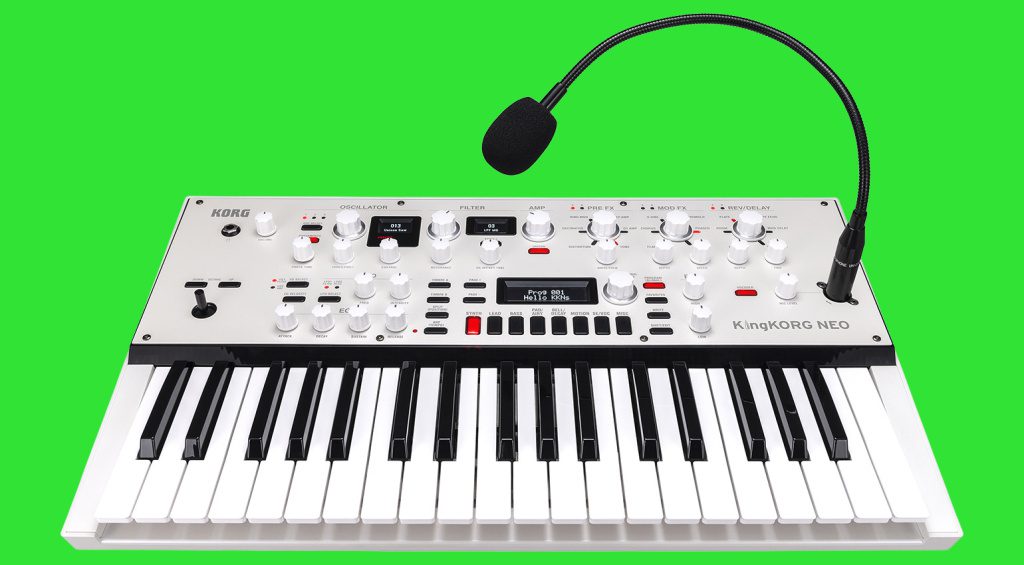
The other major change is the loss of two octaves in the keyboard. Given that this synth supports splits, this is a shame. We’ll probably see a larger SE version in the future, though, which would rectify this.
Other changes include the loss of CV/gate connectivity but the addition of a gooseneck microphone for use with the vocoder. Korg’s engineers also did some house cleaning of the oscillators, with a few of the DWGS single-cycle waves getting replaced with PCM sounds. Lastly, gone is the vacuum tube, although it does keep the high and low EQs at the output stage.
Lightweight But Not A Lightweight – The Korg KingKorg Neo
Since we’re talking about the look, let’s address build quality. The KingKorg Neo is lightweight and plasticky, which could be a good or bad thing, depending on your point of view. Gigging musicians will like the portability of it although I wouldn’t get too wild with it on stage. The knobs are solid and smooth, however, and feel good for the price range.
The velocity-sensitive keybed is springy but light. As with the original, it does not support aftertouch, which is a shame.
Korg KingKorg Neo: Virtual Analogue+
I have to confess: I never played an original KingKorg. Like a lot of other people, I was wowed by analogue at the time and it’s taken me a while to come around to the positives and possibilities inherent in virtual analogue. KingKorg Neo is a prime example of just what VA has to offer, however. The more time that I spend with it, the more that I understand why Korg wanted to try again with it.
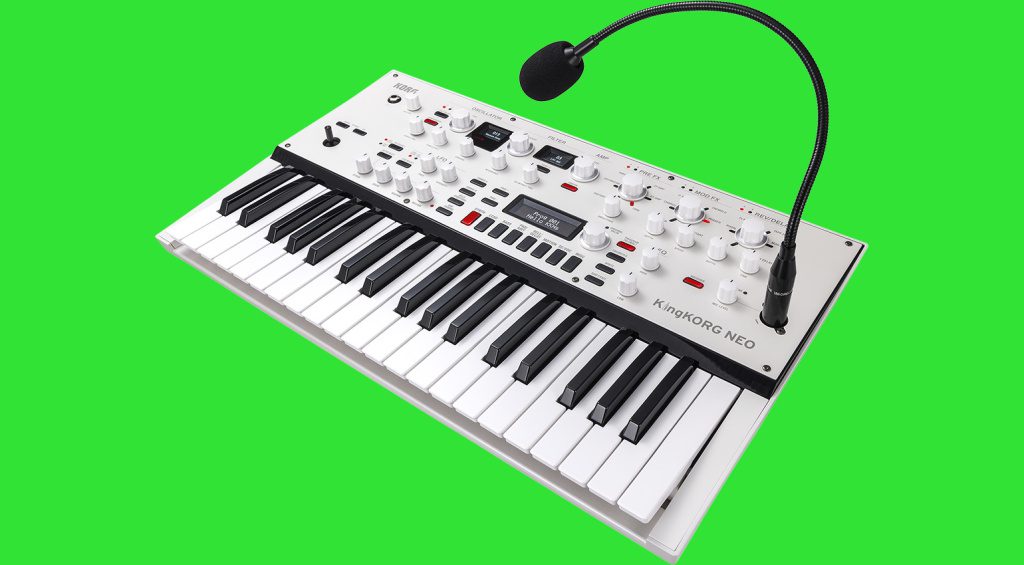
Each timbre (or sound) starts with three oscillators. The oscillators are the heart of the KingKorg, with 138 types including analogue-style, noise and the aforementioned DWGS (digital waveguide synthesis) and PCM waves. The last category is mic in for the vocoder.
The VA oscillators come in the usual sawtooth, square, triangle and sine waveforms, but also stacked, sync and cross-modulation versions. Most oscillator choices (aside from the PCMs) have additional adjustable parameters, which change depending on type. It would be nice if the manual listed these unique parameters as, with so many, they can be hard to keep track of. I had to dig into the manual for the original KingKorg to find them.
Next comes the filter section. With 18 different ones including low-pass, band-pass and high-pass, each with models from famous and classic synths like the MS-20, Prophet-5, Oberheim SEM, Minimoog and TB-303 plus a unique KingKorg circuit, there are plenty of tone-shaping possibilities.
Simple Yet Complex
The idea behind the KingKorg was to keep things relatively simple, synthesis-wise, with hands-on control for most parameters. This gives us two ADSRs, hard-wired to amp and filter, and two LFOs. These can be expanded via a modulation matrix, meaning you can get complicated if you want. This is all done via the main, two-line screen, however. Hey Korg, how about an editor?
I mentioned splits but there are also layers. You can double up the pre-effects synthesis sections for each patch. That’s six oscillators total per voice. When you consider that some oscillator types are really stacks, you can end up with many more than six. Put it into unison mode for even more!
Effects And Arpeggiator of Korg KingKorg Neo
KingKorg Neo has a fairly robust effects section, with a knob for drive and distortion, modulation like chorus and phaser, and time effects such as reverb and delay. You can’t combine reverb and delay, unfortunately. The effects go a long way towards shaping the sound, capable of acting almost as a sound design tool rather than just a finishing touch—though you can certainly do that too.
While there’s no sequencer, there is an editable arpeggiator, meaning that you can delete steps to create unusual arp patterns.
The Sound: Smooth And Professional
Overall, the Korg KingKorg Neo is smooth and professional-sounding. If anything, it may be too smooth, lacking a bit of character. However, this doesn’t have to be a bad thing. It’s a capable synthesizer across the board, just at home with bass and leads as general synth sounds.
Once you get the digital side involved and dial in some DWGS and PCM waves, your sound design options expand. Some of the VA oscillators can get pretty weird too. I found myself gravitating towards the more esoteric tones like bells and pads. Sprinkle on a little bit reduction in the effects section and it really starts to sing.
Missed Opportunities of Korg KingKorg Neo
The more time that I spent with the KingKorg Neo, the more I liked it. Once you get past the VA exterior and explore the stranger synthesis options, whole new worlds begin to open up. The PCM samples can lend it a retro ‘90s feel too. Who doesn’t need a little M1 piano transient for their 90s drum and bass pads?
However, I can’t help but feel that there are some missed opportunities here. Given its deep synthesis, aftertouch would have been amazing—even just channel aftertouch. Stacking reverb and delay is pretty standard these days and limiting us to just one or the other feels stingy. A sequencer would be nice too.
If You King To Me I’ll Korg To You
If you like the sound of the Neo but it feels expensive to you, there will probably be a module version coming. If Korg follows their recent game plan, we’ll eventually get a native software version too, which would be the cheapest of all.
If you missed the Korg KingKorg the first time around, give it another chance. It’s definitely a grower. You need to spend some time with it before it reveals its secrets to you. Once it does though, you’ll be coming back to it again and again.
Get it here at Thomann shop (affiliate) for € 1099.- / $ 990.- / £ 955.-.

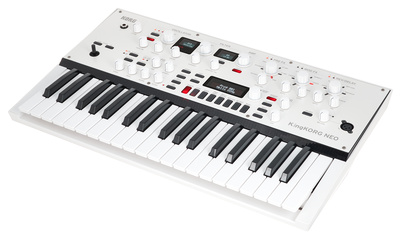
Pros and Cons: Korg KingKorg Neo
Pros
- 138 oscillator types offer dep and unusual synthesis options
- 18 filter types feature models of many classic synths
- The mod matrix offers flexibility when designing sounds
- The effects are fantastic
- Really excels at pads and leads
- Lightweight and easy to transport
Cons
- No aftertouch
- The same sound engine as the original version, for better or for worse
- Delay and reverb must be used separately
- No sequencer
More Information
- Korg KingKorg Neo home page
- All about Korg
- All about synthesizers
One response to “Korg KingKorg Neo Review: More than just a glitch in the Matrix?”
 4,6 / 5,0 |
4,6 / 5,0 | 




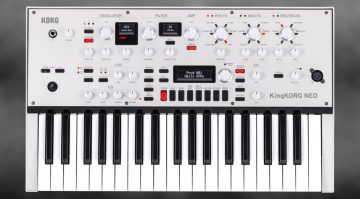
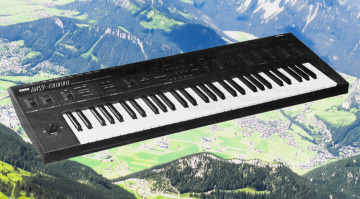
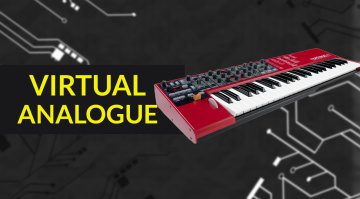


i can’t belive they respawn this $#!T ! aaaaaaaaa